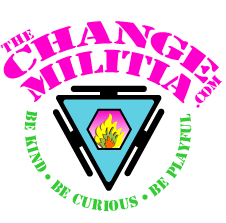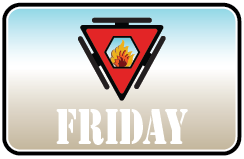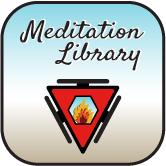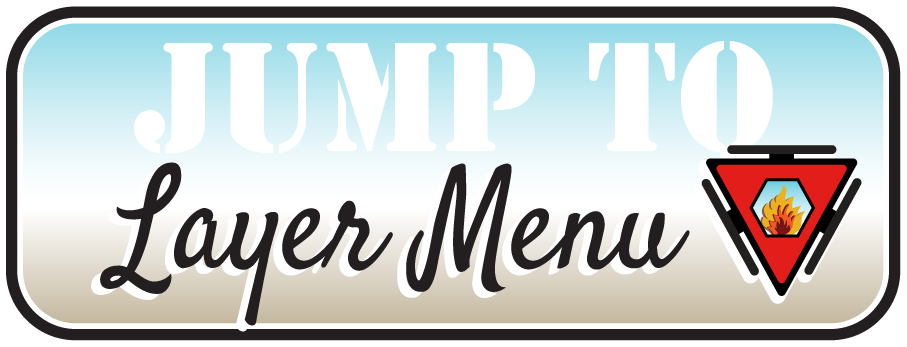
Layer Two, Week Four – Sunday
- Morning – Read Week Four Concepts
- Midday – Watch Video and Read Instructions Square Breath, Level Four
- Midday – Watch Video and Read Instructions Sensation Awareness, Level Four
- Evening – Practice Square Breath, Level Four or Sensation Awareness, Level Four
Investigate your personality. How do you respond and react to the goings on around you? What are your normals? If someone describes your personality, what do you think they would say? What ruts are you in? What is your favorite excuse? Why do you quit?
Your subconscious mind likes ruts, excuses, and quitting. It feeds off fear and drama. It is the overseer of the habits that make up the majority of your personality. Your subconscious mind uses the energy of the moment to cue scenario generation. It starts predicting threats or benefits about everything around you. When there are more stimuli than your mind can manage, it begins to look for scenarios that will get you back to what it thinks is a manageable and familiar range.
When the present is judged as out of control, a limit your subconscious mind has set, it instigates a cascade of movements to regain control. These movements are your habits, dysfunctions, and personality shortcomings. Your life is a never-ending series of these movements, movements as simple as facial expressions and including most of the aspects of your personality and all the habitual ways you diffuse or bleed energy.
Your mind burns most of the energy it consumes deciding if this moment is subjectively better than some previous moment and what might be better in the next moment. Your personality is the outward display of these cycles of subjectivity.
Your mind starts a motion by having a notion, concocting a potion and then … making a drop into an ocean.
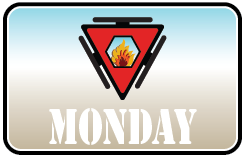
Layer Two, Week Four – Monday
- Morning – Read Monday Concepts
- Morning – Practice Square Breathing, Level Four
- Evening – Practice Sensory Awareness, Level Four
How do you bring the past into the present moment? What events in your past still influence what you do today? How often to you compare your current situation to some past event or future possibility?
As you increase your subtle awareness, when you begin to direct your mind, you will decide that the past can have no bearing and the future (the next moment or next month) will most probably be safe. This awareness will reduce the resistance you hold to your current discomfort and will help you to tolerate healthy discomfort until your systems adapts to the new, more expanded, levels. If your personality determines who you are, and your personality is a habit, as you change your habits, you change who you are. As you change who you are, you change the personality of the world around you.
The extended meditation of Square Breath, Level Four will map a new frontier for your conscious mind. It will give you a personal experience of conscious mastery. The meditation may require you to make dozens of decisions to continue; to tolerate, and to ignore your sub-conscious mind. It can be a shifting of absolute power from your sub-conscious mind to your conscious mind.
Once you have one experience of successfully enduring healthy discomfort, your subconscious mind can no longer get away with telling your conscious mind that it is impossible or pretend that it is inconceivable.

Layer Two, Week Four – Tuesday
- Morning – Read Tuesday Concepts
- Morning – Practice Square Breathing, Level Four
- Evening – Practice Sensory Awareness, Level Four
What past events hold the most value (beneficial or non-beneficial)? How do those events limit or motivate you? How could your life unfold differently if you didn’t allow those events to influence you?
Every time you challenge your subconscious mind successfully, it gets weaker and your conscious mind gets stronger. Your moment to moment awareness will grow and you will react less and less habitually (unconsciously). Beneficial decisions will be much more obvious and much easier to make.
As you begin to decide on your actions instead of reacting habitually; you will begin to meet your intentions and find levels of happiness, success, and fulfillment that you have never known.
Your movements (physical, mental, emotional, and energetic) will be aligned, balanced, and all on the same trajectory … and then your outer world will begin to entrain. You will choose to grow, to find increased happiness and fulfillment. The components of your world will either get in sync or they will fall away. Things will get progressively easier because you are lowering your resistance and the environment is doing the same thing.

Layer Two, Week Four – Wednesday
- Morning – Read Wednesday Concepts
- Morning – Practice Square Breathing, Level Four
- Evening – Practice Sensory Awareness, Level Four
As you go through your day, begin to identify the value you place on people, things, ideas, and potentials. How attached are you? Feel for your attachments.
Value is the hypothetical benefit or deficit you assign, the amount of energy you give, consciously or sub-consciously, to potentials or possibilities that you have identified or created. Attachment is the value you give a person, place, thing, belief, pattern, or idea coupled with the amount of suffering you fear if it is lost.
Fear of loss is the projection that suffering will occur when something is taken away … before you are ready to let it go. What something is worth is wholly and completely determined in your mind. Change your mind, change value.
If you have resistance to suffering, you look for ways to forestall it. When you fear loss (the assigned value of potential future pain), you create an attachment, and then distort yourself in the moment in anticipation of the possibility of loss and of that future suffering.

Layer Two, Week Four – Thursday
- Morning – Read Thursday Concepts
- Morning – Practice Square Breathing, Level Four
- Evening – Practice Sensory Awareness, Level Four
Today, track your fear of loss. How does your attachment to things correspond to your fear of loss? Identify everything in your life and wonder what it would be like to be without it. Which of those people, things, or situations generate the most fear?
Valuations of your past can be felt as attachments, resistance, held energy constructs, stuff. But it is not only the past that drains you. You are attached to your current demands, held beliefs, images about the world, and the patterns you have developed. You create attachments to mitigate the potential for change in your environment. Your mind takes the value you have created and your attachment to that value and begins to create stories about why you shouldn’t move, change, or grow.
If something has value to you, it is limiting or draining your energy in some way. How do you animate the inanimate? As you value and attach to potentials, you take a possibility and make it a part of your being. You give something life by creating a story about how it is important and how you would suffer if it was gone. You create a fictional future and then invest in that fiction. The degree to which you energize your stories is the amount they drain your vitality.
When you create a story, you are creating a limited future. Fear is the overriding and limiting factor in attachment. You are afraid the past will repeat itself and flood you with suffering, so you build a boat (create a story) and start rowing (give the story life, energy). Both the construction and propulsion of the boat drain you and if you are concentrating on that particular boat, all other boats instantly have less or no value. If you believe you have to row, all other forms of propulsion won’t have any value to you.

Layer Two, Week Four – Friday
- Morning – Read Friday Concepts
- Morning – Practice Square Breathing, Level Four
- Evening – Practice Sensory Awareness, Level Four
Which of your habits are you most attached to? Identify your habits and feel into what it would be like to do something differently. Which habit feels the hardest to imagine living without?
Let’s talk about held beliefs, recurring memories, and regurgitated events (good or bad) that you feel attached to or entitled to. You have attachments to all your habits, patterns and beliefs. You have a fear of loss for each, a pain quotient. The value you hold in place, the attachment, is the degree of suffering your subconscious mind is projecting if you were to let them go.
Years ago, I participated in a workshop with Joel Kramer and Diana Alstad, authors of The Passionate Mind and The Guru Papers. One thing they said that has been a seed for me ever since is when you have a direct experience of something, you no longer need a belief in its existence. Which I interpreted as when I am able to perceive the world as it is, I no longer need someone to explain it to me and I no longer need to follow someone else’s rules or be guided by their rules.
If your belief in a supreme deity prevents you from living your life to the fullest, it is limiting. If you believe that you are a failure and that belief keeps you from taking chances, it most certainly limits you. If you have a belief that only brown haired, blue-eyed partners that square dance are attractive, you are seriously limiting yourself. Religion can be a constant referencing to something outside of the present moment. If you use religion as a way to distance yourself from your current potential, it is just another of your diffusionary tactics.
“There is always in the healthy mind
an obscure prompting that religion teaches us rather to dig than to climb;
that if we could once understand the common clay of earth we should understand everything.
Similarly, we have the sentiment that if we could destroy custom at a blow
and see the stars as a child sees them, we should need no other apocalypse.”
G.K. Chesterton (1901)
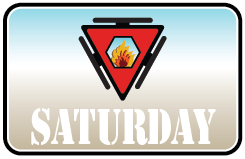
Layer Two, Week Four – Saturday
- Read Saturday Concepts
- Morning – Practice Square Breathing, Level Four
- Evening – Practice Sensory Awareness, Level Four
Make a list of the things you believe, the judgments you hold, and the truths you hold dear. And then deconstruct them. How important are each of your attachments to you? How does it serve you to have beliefs? All attachments and beliefs function to limit or promote fear. Examine your beliefs for the fear they conceal. Investigate your attachments for the doors they close and the corridors they shunt you to.
Beliefs come into play when you are uncomfortable or fearful. You fall on your beliefs to descend back to your familiar zone. You pull on your attachments to burn energy. You limit your reality and then make an effort toward that limited reality, so that your fictionality can stay an actuality.
When you understand the fear at the core of your beliefs and the basis of your attachments, you can begin to devalue them. As they lose value, attachment is reduced. When they lose all value, they lose all attachment. Every belief you have, every limiting thought, pattern, addiction, or dysfunction can be devalued and let go.
Beliefs that bring happiness and contentment are still limiting. They are limiting the amount of happiness and the degree of fulfillment. Attachments are the emotion and thought behind your resistance to being all you can be. Attachments are the army you employ to destroy, delay, or disempower change. Understanding your attachments will be the window you look through to see your created pain: the suffering you invent, invest in and maintain. Lose all attachment and you will lose all suffering. Life is not suffering … unless you choose it to be.
All attachments and beliefs function to limit or promote fear. Examine your beliefs for the fear they conceal. Investigate your attachments for the doors they close and the corridors they shunt you to.
Allow yourself to see their chains, shackles, muzzles, earplugs, and blindfolds. Disregard whether or not they serve you, disallow validity and experiences, let go of right and wrong. Look at them solely for their taint and constraint.
How do your beliefs limit you and affirm your fears? How do they keep you small, compressed or repressed? I’m not suggesting you shouldn’t have any beliefs or that all beliefs are bad; I’m suggesting that you begin to understand how they limit you, even if they are healthy, joyful, kind, loving, or fulfilling.
How much energy do your beliefs require to continue to exist? Facts and direct personal experience require zero energy; use that as a gauge. How hard do you have to convince yourself to continue to believe?
Movement – Square Breath – Layer One, Level Four
Step 1 – Give yourself twenty minutes. Turn off your phone, shut your computer (after reading this 😉 and let your muse know that you are not to be disturbed.
Step 2 - Sit comfortably (Chair, floor, or sofa, but be comfortable. Posture is important but secondary to being relaxed.)
Step 3 - Take a Current30 and begin Exhaust/Purge Breathing (Inhale deeply and exhale with mild force. As you inhale encourage yourself to relax. As you exhale, feel yourself venting tension) Continue for 30 seconds focusing on relaxing your face, neck and shoulders with each compelled exhale.
Step 4 – Sequential Relaxation (Normal but deep breathing) As the name implies, consciously relax your body as you breathe. The key here is to move from one body part to the next focusing your attention and intention on each until you feel the tissues melt.
Step 5 – Take a mental and emotional inventory. Look for habitual patterns of emotional posturing and mental tension. Search for mental images and beliefs. Unwind predispositions and presumptions. Let yourself relax, melt, and get fluid.
Step 6 – Gently contract your perineum and then inhale for a count of four (contracting the perineum is the initiating movement. It is done before you start your inhale.)
Step 7 – Maintain the static contraction of the perineum as you hold your breath for four counts.
Step 8 – Relax your perineum and then exhale for a count of four. (relaxing the perineum is the initiating movement. Relax before you allow yourself to exhale.)
Step 9 – Gently contract your perineum and begin the square breath sequence again. Repeat for twenty minutes. Yes, twenty minutes.
Step 10 – Take a 30 second break if you need to; but try to do this for the entire 20 minutes. You won’t die and it will probably be hard.
Step 11 – Track your feelings and your resistance. As they come up, as quickly as you can disregard them and continue. Make a decision to focus.
Step 12 – This is an opportunity to listen to and feel your resistance, ignore it and exist without compromise in your discomfort. Do it!
Step 13 – If you allow yourself to quit, acknowledge that your subconscious mind controlled your actions and overrode your intention to do the practice for 20 minutes. Keep trying. Get to 20 minutes.
Step 14 – When you have completed the 20 minutes, pat yourself on the back and recognize that your discomfort was a sign of success, a precursor to the new you: strong, determined, and decisive.
Why it Matters – Listen to the litany of justifications, excuses, distractions, and objections your subconscious mind throws at you as you try to sit and focus on this breath pattern for 20 minutes. That is happening with almost everything you do, all day long. Itt is easier to feel and identify when you lower your distractions. The spaghetti that stuck to the wall during your meditation is probably the same ones that noodle you when you are trying to meet your intentions.
Everyday Usability –Use this as an example of how to allow and endure healthy discomfort. Use it to resist falling into other unhealthy patterns. If you find yourself Jonesing for a blunt, brownie, or bourbon; wait and give yourself twenty minutes. Relax into the chaos or do something else. As you tolerate the discomfort of waiting, your systems will adapt, and your habits will change. Guaranteed! As your habits change, you change, as you change, the world!
Progression – This is the last of the square breaths for a while. Next week you will move on to getting to know your body’s energy field, energy flow, and what is hampering your fluidity.
Movement – Sensation Awareness – Level Four
Step 1 – Get to know your feet.
Step 2 – Prod, poke, massage and manipulate your right foot from the toes to the ankle.
Step 3 – Begin moderately massaging the bottom of your foot right where the toes attach. Feel for tenderness, knots, or numbness.
Step 4 – Continue to the front pad. Make sure you massage from the far inside to the far outside.
Step 5 – Massage the transition from pad to arch in a line from inside to outside.
Step 6 – Concentrate on the arch of your foot and feel for the most sensitive spot (keep your pressure moderate).
Step 7 – When you have fully explored the arch, move to the heel. Massage the heel and include the edges.
Step 8 – Begin massaging the top of the foot, concentrating on the area between the metatarsal and tarsal bones.
Step 9 – Massage around the ankle while gently moving your foot through its range of motion.
Step 10 – Repeat the above steps on the left foot.
Step 11 – Go back to the most sensitive spot on either arch and apply and maintain gentle pressure for several minutes while doing steps 12-17.
Step 12 – Try to maintain a constant level of sensation in that spot. As you maintain pressure, take a Current30. Assess your current configuration.
Step 13 – Breathe deeply and sequentially relax all areas of your body.
Step 14 – Allow your mind to settle and your emotions to flow.
Step 15 – Feel how the sensation radiates from the pressure point outward.
Step 16 – Feel or visualize the energy moving from the arch of your foot up your leg to your hips. Feel it pooling in your low belly.
Step 17 – Gently relax the pressure, lie back and spend a couple of minutes feeling your low belly.
Why it Matters – This exercise will help you get to know your body, starting at your feet. It will help you find places that are sensitive, underdeveloped, and unloved. Realize that the experience you had with your feet is going on in your entire body. When you have pain, limited mobility, or numbness; some other body part compensates … and is probably overworked … leading to disease, injury, and lack of mobility and more importantly, motility. Mobility is being capable of movement (or being moved), motility is being able to move (locomotion). If you are passed out drunk, your mobility is good, your motility is lacking.
Everyday Usability –Use this massage technique on other body parts and see what you can learn. Look for the places you ignore, prejudge, or knowingly overwork. This is self-care. Take the time, make the time, and then give it time. Tissues may take a while to adjust, heal, or improve.
Progression – Next week, you will take this type of movement to all of your major joints and intersecting tissues.
